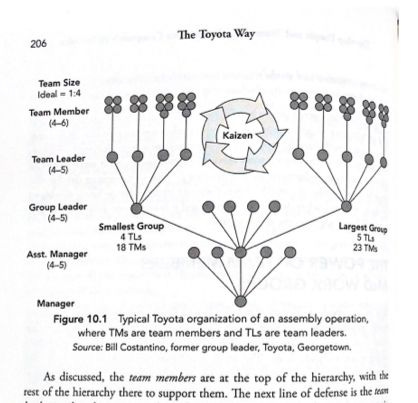I was going to call this article Culture is Queen, but then I realised the Queen may be the monarch in a royalist hierarchy.
Culture, in recruiting a vacancy, is the consort of context.
Establishing context first helps better define your culture.
You may disagree and believe that culture is the most important criterion for recruiting a key hire.
However, if we look at it both ways, we can find a more integrated discussion on the application of culture in recruitment.
(To avoid a debate on the merits of monarchy in the modern era, let’s pretend we’re playing Chess. The Queen is more powerful, but the King wins the game.)
I’m a big fan of Toyota methodology, such as my recent email on 5 Why and the forthcoming one on Gemba.
It’s not so much that I’ve adapted their principles in building my ideology, more that I find they correlate with my ideas. They are great to use as examples, mitigating what may be a sense of “you would say that!”
Toyota is an innovator in many ways, challenging traditional ways of working.
One example of how they are unusual is this organisation chart, a rare time when a picture will be included in these articles:
How often have you seen an upside-down org chart, with production workers at the top, where the ‘value’ is?
Information flows down from the shop floor to better inform action and strategy. And every tier supports the one above it.
More than that, the leader, in this structure, bears the weight of the entire organisation. As it should be, IMO.
This is an example of bottom-up (detail first) thinking, compared to the norm of top-down (concept first).
The typical definition of culture is top-down: a culture derived from mission, vision, values, behaviours & attitudes.
It’s aspirational and an effective keystone in recruitment.
However, there are issues with this definition:
How often is a culture consistent throughout an organisation?
Do stated values reflect the true culture that is experienced by the workforce?
If culture is ill-defined can you rely on it as a consistent measure in recruitment?
How accurate are cultural assessments of candidacy – interviews, psychometrics, assessments – how often are they wrong, lead to biased decisions or non-diversity?
Now let’s look at culture from a bottom-up perspective.
Culture flows from the experience employees have and the details that intersect. It’s the consequence of how everything within an organisation comes together:
- behaviours and attitudes (common, worst accepted and aspirational)
- output
- compensation & benefits
- working arrangements
- working environment
- workflow
- flexibility
- management philosophy and approach
- leadership philosophy and approach
- trust and empowerment
- belonging
- how vision & values are embodied
- mission, goals and objectives
- retention strategy and execution
- recruitment strategy and execution
- how the employer buys and sells
- marketing; website, socials, communications, adverts, etc
- transparency and honesty in internal communications
- diversity, equity and inclusion, or lack thereof
- equipment
- IT
Crikey that's a long list, including those from top-down from an experiential perspective, without thinking about every other experience and touchpoint an employee may have.
But it's a long list for a reason because each point has a part to play in culture, is definable, able to be challenged and changeable when there are problems.
And this is a list that comes about, in recruitment, through a full contextual analysis of a vacancy, rather than a generic discussion of culture. It defines a specific team and functional culture, as well as how this fits within the wider organisational culture.
Look at this list in a suitable and sufficient way to inform your recruitment process. Represent it truly and fairly to attract the right candidates.
Bring these details together with the concept of your culture, and we have a more robust definition that will have meaning for the people you want to employ.
It goes to follow that for key hires context and culture should always be established, whether recruiting directly or partnering with the right recruiter (hi).
If your suppliers’ fallback question is “is there parking on site”, their efficacy may be limited.
Match candidates to your context and culture, and you’ll be more likely to have better retention.
This is similar to my argument for better candidate experience both as a consequence and goal of good recruitment.
If context is the building blocks, culture and candidate experience are the glue that binds everything together.
Top-down and bottom-up together in harmony.
The next newsletter, while I’m inspired, is on the Gemba, and the wins it will bring you in improving your recruitment.
Regards,
Greg
p.s. While you are here, if you like the idea of improving how you recruit, lack capacity or need better candidates, and are curious how I can help, these are my services:
- commercial, operational and technical leadership recruitment (available for no more than two vacancies)
- manage part or all of your recruitment on an individually designed basis for one client
- recruitment coaching and mentoring (one place available at £200/hr + VAT)
- recruitment strategy setting
- outplacement support
Just hit reply to check if my approach is right for you.



